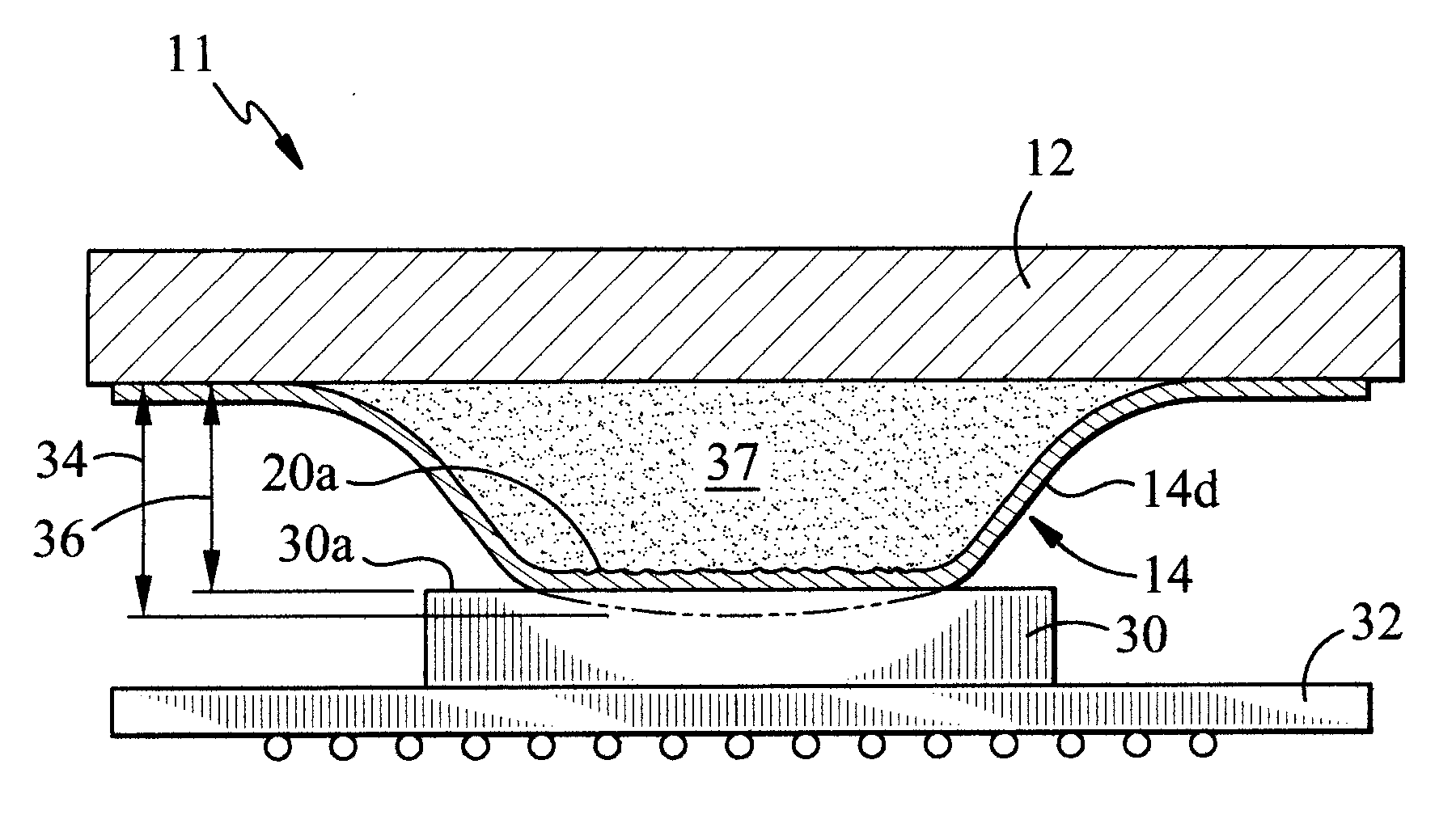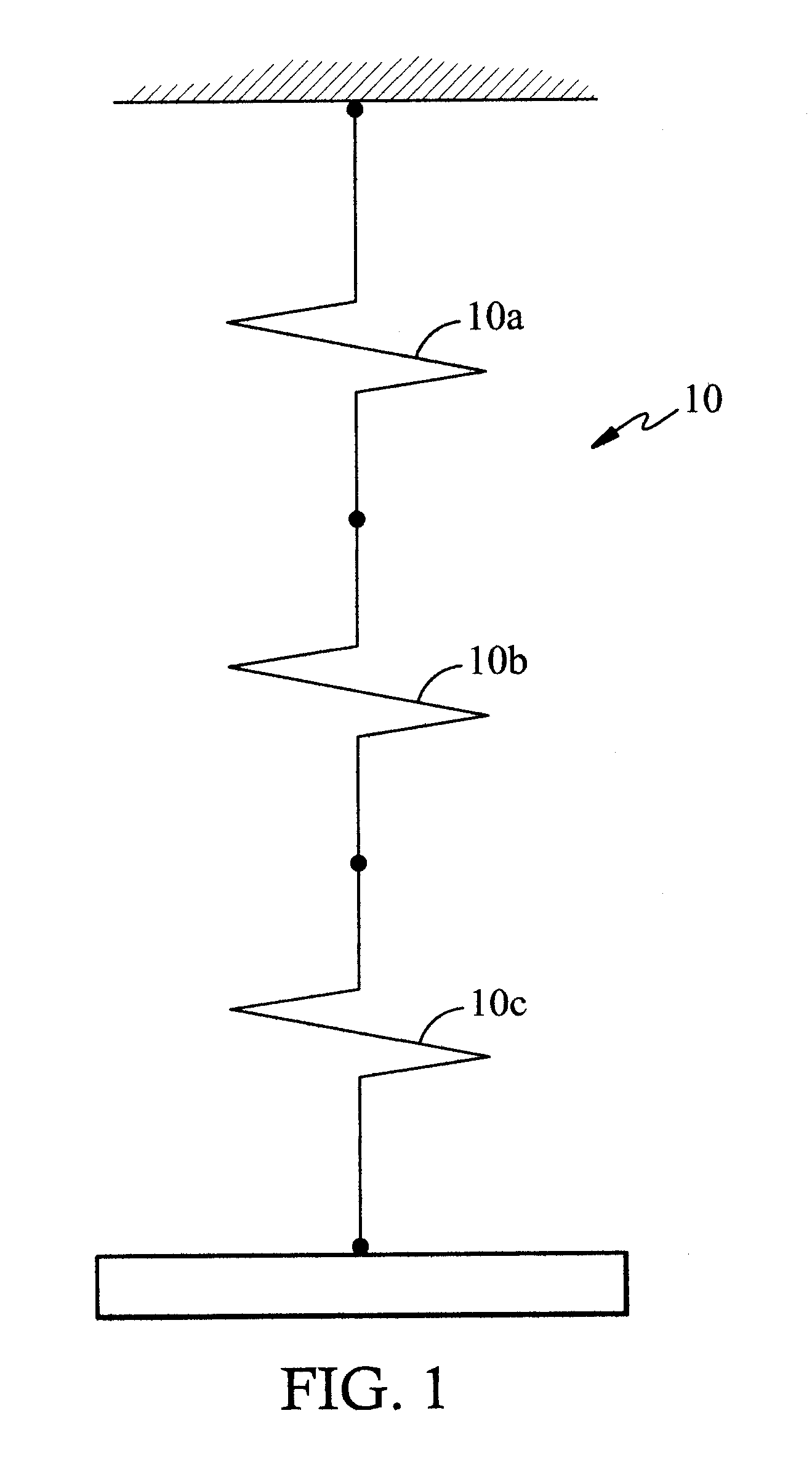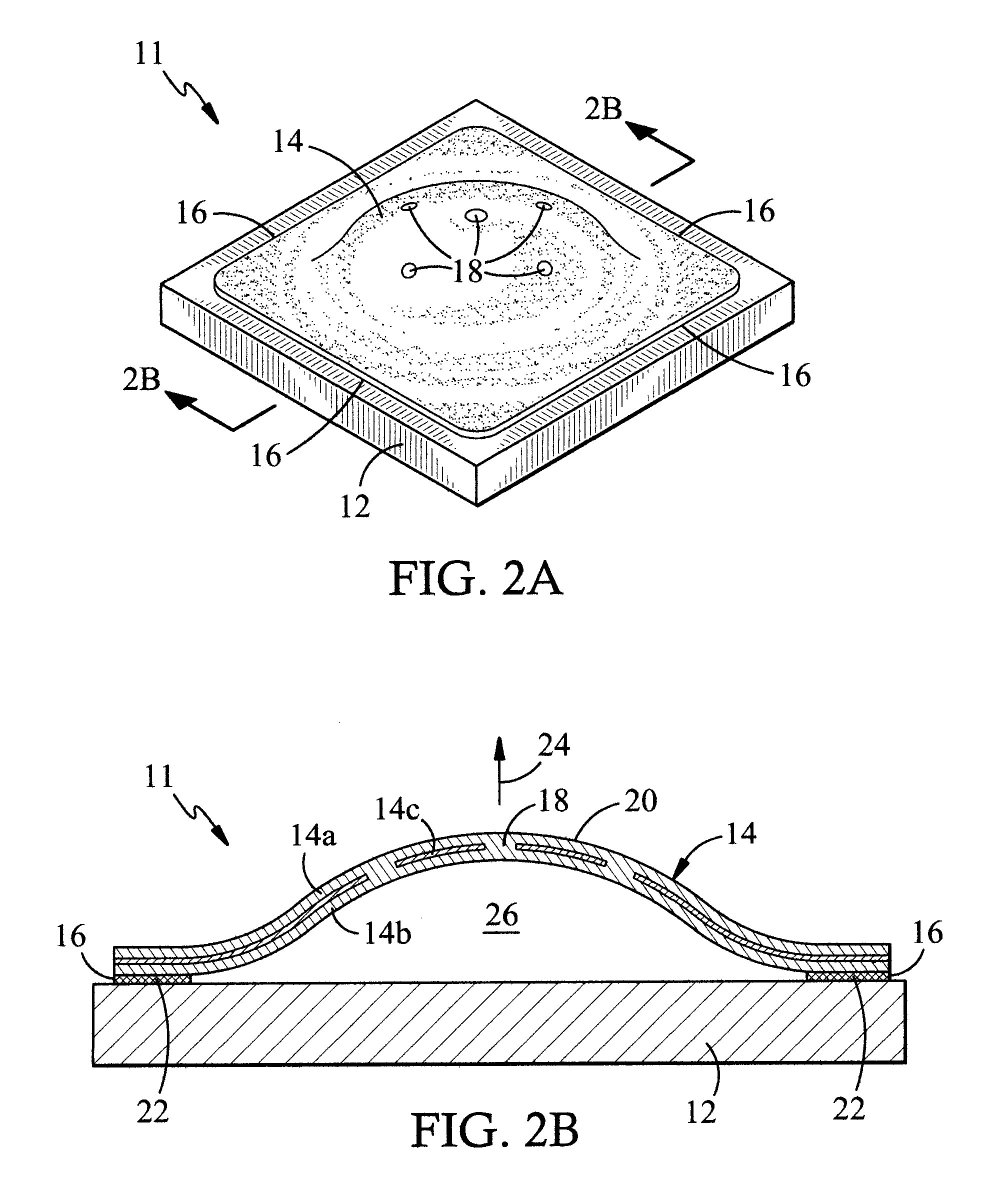High Performance Large Tolerance Heat Sink
a heat sink, large tolerance technology, applied in indirect heat exchangers, electrical generators, lighting and heating apparatuses, etc., can solve problems such as cost management, and achieve the effect of sufficient flexibility
- Summary
- Abstract
- Description
- Claims
- Application Information
AI Technical Summary
Benefits of technology
Problems solved by technology
Method used
Image
Examples
Embodiment Construction
[0027] Conduction is defined as the transfer of heat through a static (non-moving) material. Heat will flow through the material if there is a temperature differential across it. The heat flow will be in the direction from the higher temperature to the lower temperature. The rate of heat flow will depend upon the temperature differential and the thermal conductivity (reciprocal of thermal resistance) of the material. The overall relationships are analogous to current flow in an electric circuit, where temperature differential is equivalent to voltage differential, thermal conductivity is equivalent to electrical conductivity, the rate of heat flow is equivalent to electric current, and thermal resistance is equivalent to electrical resistance.
[0028] An illustration of a thermal circuit 10 of a heat sink constructed in accordance with one embodiment of the present invention is shown in FIG. 1 and represented in equation form below:
Rth total=Rth bond 1(10a)+Rth thermal conductive mat...
PUM
 Login to View More
Login to View More Abstract
Description
Claims
Application Information
 Login to View More
Login to View More - R&D
- Intellectual Property
- Life Sciences
- Materials
- Tech Scout
- Unparalleled Data Quality
- Higher Quality Content
- 60% Fewer Hallucinations
Browse by: Latest US Patents, China's latest patents, Technical Efficacy Thesaurus, Application Domain, Technology Topic, Popular Technical Reports.
© 2025 PatSnap. All rights reserved.Legal|Privacy policy|Modern Slavery Act Transparency Statement|Sitemap|About US| Contact US: help@patsnap.com



